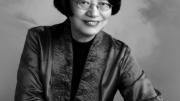“I grew up knowing what food should taste like, look like, and smell like, even in ordinary daily cooking: in other words, as a food connoisseur,” says Teresa Chen ’64. Raised in Hong Kong, she ate many dishes prepared by her nanny, who came from the Shunde region of China, the reputed birthplace of many renowned chefs. But Chen’s mother, in her own version of women’s liberation, let her daughters focus on studying and earning good grades, hoping they would one day earn wages equal to those of their male peers. Chen didn’t really learn how to cook until later.
Her new book, A Tradition of Soup: Flavors from China’s Pearl River Delta (North Atlantic Books), a collection of 144 recipes from southern China, is the result of years invested in health education—and a moment of inspiration. In 1981, she attended a lecture by then Peabody professor of anthropology K. C. Chang and read his book, Food in Chinese Culture.That sparked the idea of writing a practical cookbook that would allow readers to use the concepts outlined by Chang and his contributors in their own kitchens. Though the project was long relegated to the back burner, Chen picked it up again in 2003 with a new focus. “I had become a decent home cook and a health educator,” she says. “As a volunteer and a member of the board of directors of a Chinese senior-citizens center, I was amazed by the energy and looks of the seniors and inquired about their secrets. All answers pointed to soups—the Cantonese slow-cooking soups.”
She began by interviewing and collecting recipes from a small group of the seniors. Later, she branched out, soliciting advice from friends and professional chefs and even inventing a few concoctions of her own, such as “Asparagus, Shiitake Mushroom, and Sliced Chicken Soup.” The recipes, intermingled with information about southern Chinese culture, traditional medicine, and immigration history, are grouped by seasons and health concerns, including gaining and losing weight, getting rid of acne, and preventing wrinkles. “The selection and organization evolved as I deliberated the many facets of Chinese life, in sickness and in health, in lean times and in prosperity, in the old ways and in the modern kitchen,” she says. (The volume also has an ingredients glossary, with Chinese names and pronunciations, and photographic illustrations, most by Chen herself).
Chen believes each recipe can serve as a springboard for culinary experimentation because soup-making is relatively flexible and forgiving. “I want to unleash the creativity in each person, as a cook, to adapt to budget, personal taste, the availability of fresh produce, and to the health condition and needs of the individual or family,” she states. “After all, a tradition is not a relic. It has a life of its own, constantly changing and evolving.” She invested a great deal of effort in converting informal instructions like “a handful of this” and “half a bowl of that” into more precise weights and volumes, but found it nearly impossible—and, in the end, too limiting—to pin down precise temperatures and cooking times. Instead, she encourages readers to “look at the food in the pot, instead of the kitchen clock.”
A Tradition of Soup also grew from her work at the Pacific Complementary Medicine Center (PCMC) in Stockton, California, which she and her husband, Yi-Po Anthony Wu, M.D., founded in 1993. Though Chen has a Ph.D. in linguistics, her involvement in the PCMC has turned her focus to the study and teaching of alternatives to western allopathic medicine. (She is a registered trainer with the National Acupuncture Detoxification Association, and continues to pursue her education in nutrition, Chinese cooking, herbal therapy, tai chi, and qigong.) Using her book as a point of reference, she says, “I can better guide our patients to healthy cooking and healthy eating. And I will certainly continue to practice what I preach.”









